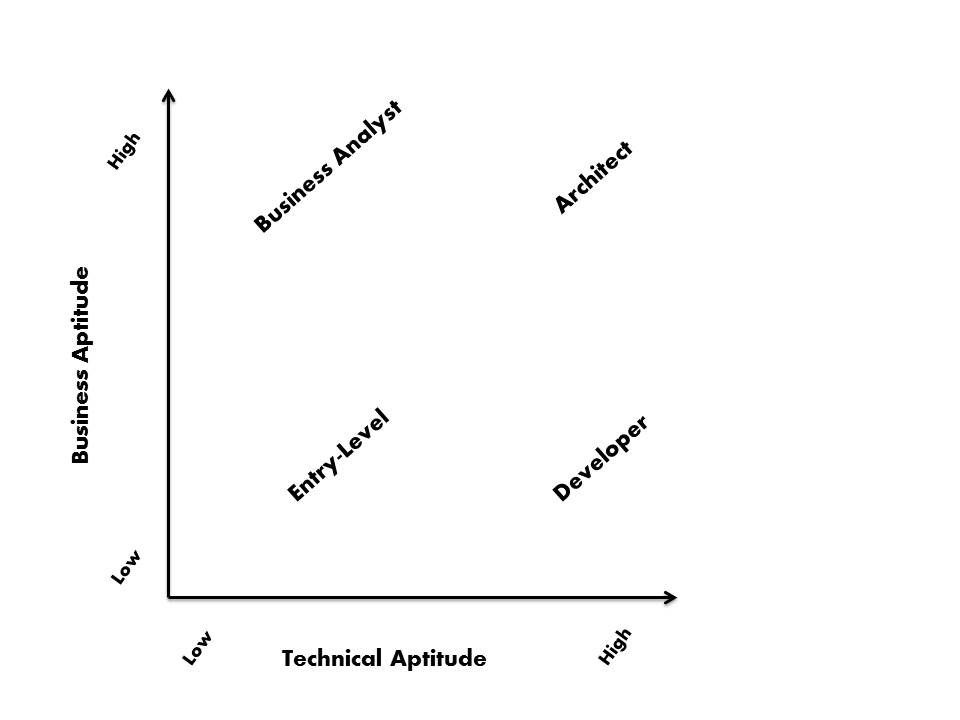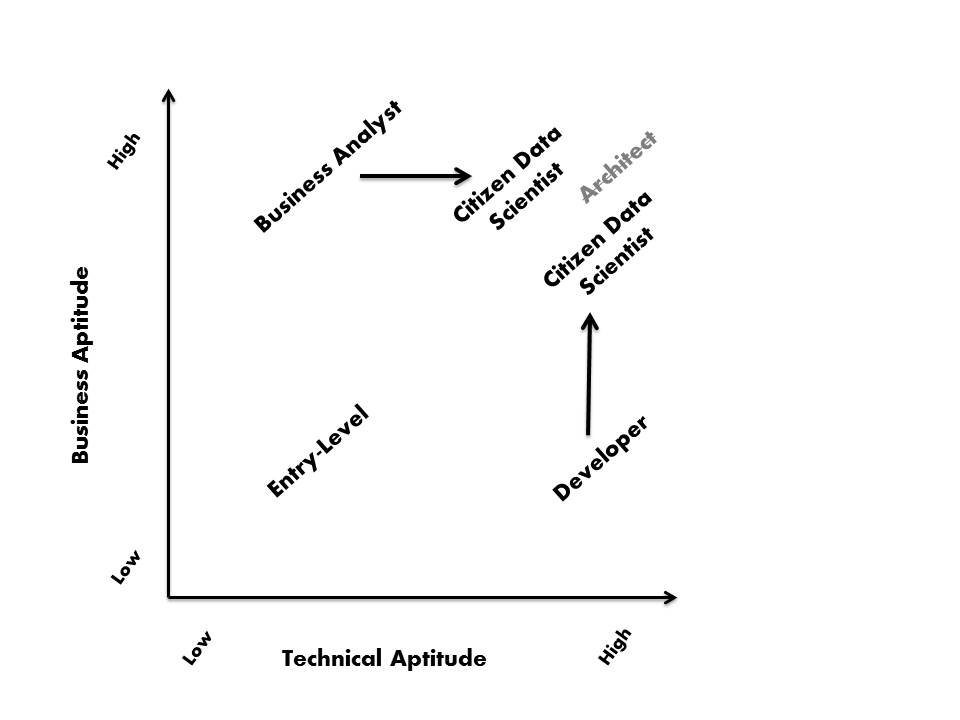The data and predictive analytics landscape continues to shift rapidly as old practices are phased out and new technologies enter the mainstream on a virtually constant basis. As these changes continue to play out, business and IT managers face immense challenges when it comes to IT staffing to ensure their teams are comprised of the right people, especially when it comes to data and analytics. It’s especially hard to find IT people with the data expertise needed to solve today’s business problems, but who are also adaptable to the shifts in in the field that lay ahead.
The Traditional IT Staffing Model

The way IT teams are structured today assumes that business knowledge and technical knowledge are mutually exclusive qualities for the majority of employees. Technical and managerial responsibilities are clearly demarcated and assigned to those with the respective skills.
Business analysts are those members of the IT staff whose core competency lies in understanding the challenges and needs of the business itself. While they are familiar with what technology can do, they are generally not sufficiently trained or interested in making the technology serve their purposes. These are the people who might identify, for example, that the organization could improve if it found commonalities across customers that the company has lost over time. They aren’t, however, the people who can work with the data to identify what those commonalities are.
Developers and engineers, on the other hand, are super-strong technicians (hopefully) who are assumed to not understand the business value of what they’re creating. They respond to requests from business analysts and implement them in code.
Good data architects understand both what the business needs and the technologies required to satisfy those needs. They know where to get the data from, how to manage it, and how the technology will play a role in making that data accessible and actionable for the business users. Furthermore, while they may not do the work themselves, architects have the skills necessary to direct engineers in implementation and ask business analysts the right questions to make sure the finished software will meet the business need.
The Future of IT Staffing (Data-first Staffing)

In contrast to the traditional IT staffing model, the future sees the architect role taking a back seat as companies move away from custom designs running on local hardware and toward packaged systems run and managed in the cloud. For example, you don’t need to architect and engineer a new CRM system if you buy one of the many “off-the-shelf” CRMs out there.
The International Institute for Analytics predicts that successful companies will take the necessary steps to break down the divide between data and IT staff and business teams. IIA identifies business acumen as a highly sought after quality in IT and analytics professionals and believes that companies will do what is necessary to bring engineers and developers into the business strategy fold. Similarly, business analysts will need to know more about the technologies that will allow them to unlock strategic insights hidden in data.
The idea, as we have mentioned in previous posts, is to develop as many citizen data scientists as possible within your IT team.
What Does This Mean for IT Staffing Today?
Given these trends, here are our recommendations:
- The base criteria for new IT staff is increasing dramatically as data analysis becomes an integral component of business strategy. You shouldn’t be satisfied with just Excel or Access skills. Demand that entry-level IT and data staff be able to perform basic queries in SQL, and maybe even possess knowledge of vendor-specific BI systems. Alternatively, be prepared to train your IT staff in the data skills necessary for future business success.
- As the responsibilities of IT teams continue to shift to business analysis, it will become increasingly impractical to maintain a full technology staff. As a result, IT departments will have to strongly consider whether their best option is to hire or to contract data talent to achieve near-term objectives. As we have noted before, it is highly likely that the IT department as we know it stands a strong chance of disappearing completely in the near future. Your IT staffing plans should be prepared for this reality.
Is something lacking in your technology or data team? Dataspace offers a variety of data science, analytic, and engineering staffing solutions to help you realize the value of your data assets. Unlike traditional tech recruiters, we know how to identify top data analysts, data architects and data scientists for our clients. We work with some of the largest companies in the US, and many tell us that their success rate with Dataspace staff is far higher than from their other staffing vendors. Contact us to learn more.

